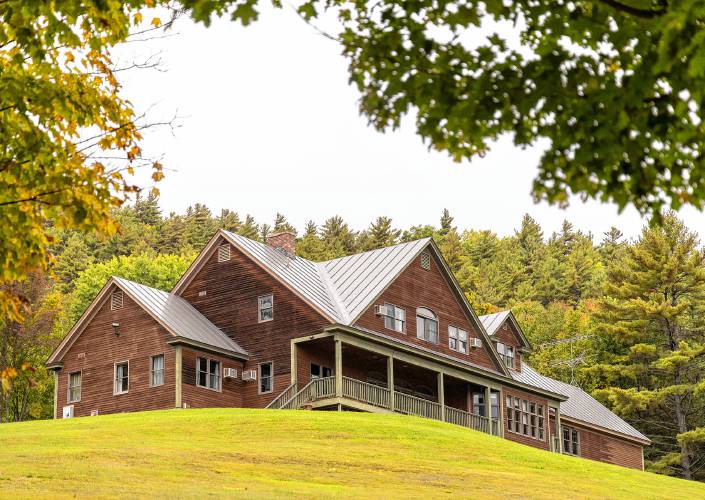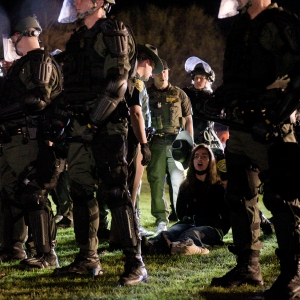Editorial: The complex reality of juvenile justice

The Newbury property under consideration at a Development Review Board hearing to consider the application by Vermont Permanency Initiative seeking approval to operate the “Woodside Replacement.” The meeting took place at Newbury Elementary School in Newbury, Vt., on Saturday, October 2, 2021. (Rob Strong photograph) Rob Strong
| Published: 12-30-2023 9:13 PM |
Vermont still cannot quite make up its mind what to do with “justice-involved” youth, the catch-all term for those under age 18 who have run afoul of the law. Lock ’em up? Or provide treatment in a secure residential setting?
A recently decided Vermont Supreme Court case reflects that apparent ambivalence. The court’s majority, in a 4-1 decision, ruled that the terms “group home” and “disability” were sufficiently elastic to cover a six-bed secure facility for juveniles that the state Department for Children and Families proposes to locate in a renovated former bed-and-breakfast on 280 acres in a remote corner of Newbury. In doing so, the justices relied on DCF’s assurances that “the facility would serve youth who had been diagnosed (with) or (are) believed to have” psychiatric, mental-health or behavioral disorders.
Justice Karen Carroll was having none of it. In her dissent, she in effect accused her colleagues of allowing DCF to channel Alice in Wonderland: When the agency uses a word, it means just what the agency chooses it to mean — neither more nor less.
She detailed the extensive security measures planned and pointed out the tension between DCF’s characterization of the facility as one designed as a residence for the care and supervision of juveniles living with disabilities “and the undisputed facts concerning its status as an ‘architecturally secure facility’ designed to incarcerate juveniles and to protect the public from them.” She averred that “the result comes perilously close to pathologizing every justice-involved juvenile in Vermont” as suffering from a disability. From this we infer that Carroll believes, as many people do, that incarcerating some incorrigible kids to assure public safety is the primary goal.
The determination that the facility qualifies as a group home for people with disabilities was key. That designation exempts the facility from certain zoning restrictions, effectively nullifying the Newbury Development Review Board’s denial of a permit for the project. The DRB concluded, as Carroll did, that the purpose was not to accommodate disabled youth, but “to provide a high-security detention facility for youths at risk for harm to themselves or presenting a risk to community safety.”
It should be noted, although this was not reflected in the court record, that the group home designation might allow the facility to draw upon federal Medicaid dollars to cover the treatment services offered there. No such federal money would be available if the purpose of the facility were primarily detention.
In our view, the reality of what’s needed in the way of a facility eludes these binary characterizations. The previous incarnation, the Woodside Juvenile Rehabilitation Center, was closed in 2020 amid widespread and credible allegations that youths housed there suffered horrific abuse. It certainly operated as more of a detention center than as a model for rehabilitation.
The replacement for Woodside proposed by DCF appropriately acknowledges that some youth who have been convicted of or charged with a criminal or delinquent act need to be detained in a secure facility precisely in order to get the therapeutic treatment they require to become fully functioning and productive members of society. The facility proposed for Newbury would be operated by the Vermont Permanency Initiative, which is associated with the Becket Family of Services. Becket has extensive experience and expertise in providing specialized residential services for children and youth, according to a 2020 DCF report to the Legislature. An independent evaluation of VPI’s proposed program contained in that report concluded that it “balances restorative justice practices that encourage youth responsibility for behaviors, opportunities for repairing harm and learning new skills to meet needs in socially acceptable ways.” Sounds to us like exactly what’s needed.
Article continues after...
Yesterday's Most Read Articles
 They remember Vietnam protests. Now, they're facing charges after protesting the Gaza war at Dartmouth.
They remember Vietnam protests. Now, they're facing charges after protesting the Gaza war at Dartmouth.
 Homeless Upper Valley couple faces ‘a very tough situation’
Homeless Upper Valley couple faces ‘a very tough situation’
 NH search crew finds remains of long-missing hiker in remote wilderness area
NH search crew finds remains of long-missing hiker in remote wilderness area
 Bears girls finish first in CVC Championships
Bears girls finish first in CVC Championships
Whether Newbury is the right place for the secure facility is another question, as is whether it will actually be located there. In comments to VtDigger after the court ruling, DCF Commissioner Chris Winters said he had no specific timeline for the Newbury project. “While awaiting this decision, we have been pursuing several other avenues to address the immediate needs of those kids requiring secure treatment and stabilization,” he said.
Since Woodside was closed, justice-involved Vermont youth have been held in adult prisons or shipped out of state to sometimes problematic facilities, a situation that cannot be allowed to persist. The highest priority must be assigned to establishing within Vermont an environment for these troubled children that is secure, humane and therapeutic, with equal emphasis on all three components.

 Editorial: Response to campus protests only adds fuel to the fire
Editorial: Response to campus protests only adds fuel to the fire Editorial: Chris Sununu’s moral vacuum
Editorial: Chris Sununu’s moral vacuum Editorial: Gambling tarnishes America’s sporting life
Editorial: Gambling tarnishes America’s sporting life By the Way: A white nationalist’s many mistruths
By the Way: A white nationalist’s many mistruths
